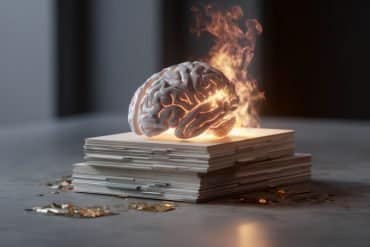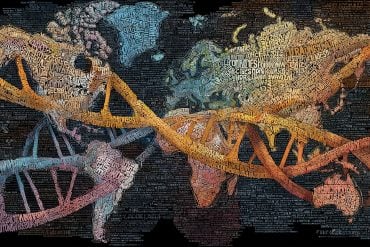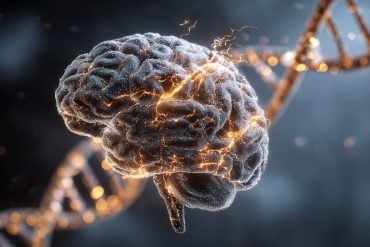Summary: Due to advances in resuscitation and critical care, many people are surviving near-death experiences. Survivors’ recalled experiences are not consistent with hallucinations, but instead, follow a specific narrative arc involving perception.
Source: NYU Langone Health
Scientific advances in the 20th and 21st centuries have led to a major evolution in the understanding of death. At the same time, for decades, people who have survived an encounter with death have recalled unexplained lucid episodes involving heightened consciousness and awareness. These have been reported using the popular—yet scientifically ill-defined—term “near-death experiences”.
A multidisciplinary team of national and international leaders, led by Sam Parnia, MD, Ph.D., director of Critical Care and Resuscitation Research at NYU Grossman School of Medicine, have published “Guidelines and Standards for the Study of Death and Recalled Experiences of Death,” a multi-disciplinary consensus statement and proposed future directions in the Annals of the New York Academy of Sciences.
This study, which examined the accumulated scientific evidence to date, represents the first-ever, peer-reviewed consensus statement for the scientific study of recalled experiences surrounding death.
The researchers on the study represent many medical disciplines, including the neurosciences, critical care, psychiatry, psychology, social sciences and humanities, and represent many of the world’s most respected academic institutions including Harvard University, Baylor University, University of California Riverside, University of Virginia, Virginia Commonwealth University, Medical College of Wisconsin, and the Universities of Southampton and London.
Among their conclusions:
- Due to advances in resuscitation and critical care medicine, many people have survived encounters with death or being near-death. These people—who are estimated to comprise hundreds of millions of people around the world based on previous population studies—have consistently described recalled experiences surrounding death, which involve a unique set of mental recollections with universal themes.
- The recalled experiences surrounding death are not consistent with hallucinations, illusions or psychedelic drug induced experiences, according to several previously published studies. Instead, they follow a specific narrative arc involving a perception of: (a) separation from the body with a heightened, vast sense of consciousness and recognition of death; (b) travel to a destination; (c) a meaningful and purposeful review of life, involving a critical analysis of all actions, intentions and thoughts towards others; a perception of (d) being in a place that feels like “home”, and (e) a return back to life.
- The experience of death culminates into previously unidentified, separate subthemes and is associated with positive long-term psychological transformation and growth.
- Studies showing the emergence of gamma activity and electrical spikes—ordinarily a sign of heightened states of consciousness on electroencephalography (EEG)—in relation to death, further support the claims of millions of people who have reported experiencing lucidity and heightened consciousness in relation to death.
- Frightening or distressing experiences in relation to death often neither share the same themes, nor the same narrative, transcendent qualities, ineffability, and positive transformative effects.
“Cardiac arrest is not a heart attack, but represents the final stage of a disease or event that causes a person to die,” lead author Parnia explains. “The advent of cardiopulmonary resuscitation (CPR) showed us that death is not an absolute state, rather, it’s a process that could potentially be reversed in some people even after it has started.

“What has enabled the scientific study of death,” he continues, “is that brain cells do not become irreversibly damaged within minutes of oxygen deprivation when the heart stops. Instead, they ‘die’ over hours of time. This is allowing scientists to objectively study the physiological and mental events that occur in relation to death”.
So far, the researchers say, evidence suggests that neither physiological nor cognitive processes end with death and that although systematic studies have not been able to absolutely prove the reality or meaning of patients’ experiences and claims of awareness in relation to death, it has been impossible to disclaim them either.
“Few studies have explored what happens when we die in an objective and scientific way, but these findings offer intriguing insights into how consciousness exists in humans and may pave the way for further research,” Parnia adds.
About this near-death experience research news
Author: Press Office
Source: NYU Langone Health
Contact: Press Office – NYU Langone Health
Image: The image is in the public domain
Original Research: Closed access.
“Guidelines and standards for the study of death and recalled experiences of death––a multidisciplinary consensus statement and proposed future directions” by Sam Parnia et al. Annals of the New York Academy of Sciences
Abstract
Guidelines and standards for the study of death and recalled experiences of death––a multidisciplinary consensus statement and proposed future directions
An inadvertent consequence of advances in stem cell research, neuroscience, and resuscitation science has been to enable scientific insights regarding what happens to the human brain in relation to death.
The scientific exploration of death is in large part possible due to the recognition that brain cells are more resilient to the effects of anoxia than assumed. Hence, brain cells become irreversibly damaged and “die” over hours to days postmortem.
Resuscitation science has enabled life to be restored to millions of people after their hearts had stopped.
These survivors have described a unique set of recollections in relation to death that appear universal.
We review the literature, with a focus on death, the recalled experiences in relation to cardiac arrest, post–intensive care syndrome, and related phenomena that provide insights into potential mechanisms, ethical implications, and methodologic considerations for systematic investigation.
We also identify issues and controversies related to the study of consciousness and the recalled experience of cardiac arrest and death in subjects who have been in a coma, with a view to standardize and facilitate future research.







